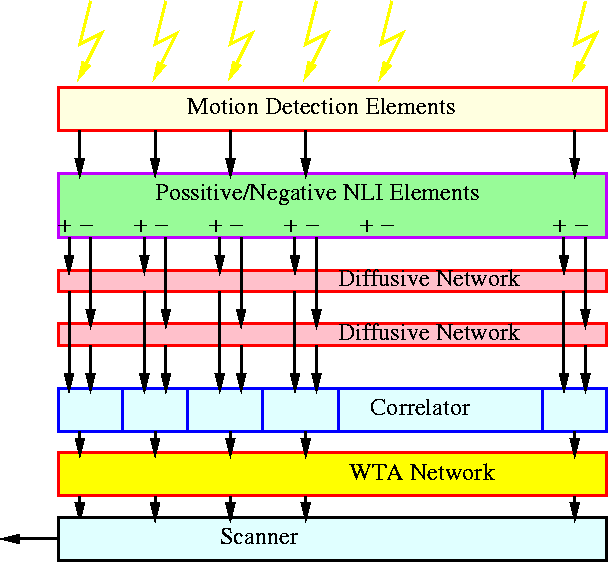In order to determine the focus of expansion (FOE) or direction of heading (DOH) Indiveri et al. have implemented an analog VLSI chip which computes heading direction [Indiveri et al. 95]. In principle FOE is a point where all optical flow vectors intersect, of course for a stationary scene and with translational motion only. Therefore, if the optical flow is determined, simple algorithms may find the FOE. A simple way, which is used in this implementation, relies on the fact that the direction of optical flow changes in FOE point. In other words, FOE is the zero-crossing of optical flow. A prototype chip has been designed, which incorporates the required functional blocks. Architecturally, the chip contains an array of motion sensing elements followed by two separate layers of nonlinear lateral inhibition circuits for positive and negative velocity values. The outputs of the nonlinear LI layers are spatially smoothed using Boaehn-Andreou's diffusive network (See section 2.6). A correlation circuit based on Delbrück's bump circuit [Delbrück 91] finds the correlation between the output of the positive channel with the output of the neighboring negative channel. Hence, a measure of the zero-crossing, and the steepness of the curve is found. As due to nonideal effects there may be several zero-crossings a winner-take-all circuit selects only one of such zero-crossings. The simplified architecture is illustrated in Figure 3.25.
The chip, which contains a 24-element 1-D array, has been implemented
in a 2 ![]() m CMOS process.
m CMOS process.

Figure 3.25: Indiveri's time-to-crash sensor.